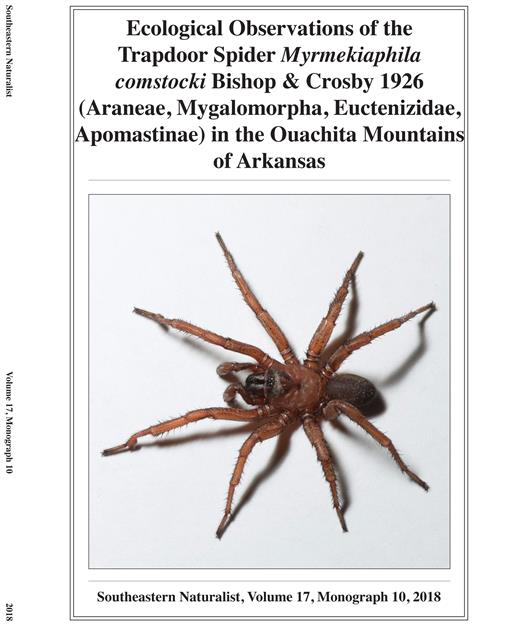This study focused on the ecology of the trapdoor spider Myrmekiaphila comstocki in the Ouachita Mountains of west-central Arkansas in order to better understand the microhabitat of the burrows and the activity season of this species. I studied a population of 56 individually marked burrows during 2003–2009 at the Ouachita Mountains Biological Station. I recorded the surface structure of the burrows, temperatures, burrow depth, microhabitat around the burrow, and the facing direction of the trapdoor relative to the surrounding terrain. Spiders were active in all seasons and at ground surface temperatures that were below freezing; however, the bottoms of the burrows were never below freezing. Burrow diameters change over time, apparently due to the growth of the spider as the burrow widths appear to be correlated to the size of the spider inhabitants. The burrows were 60–330 mm deep and were open 25% of the time. Larger burrows were destroyed (by possible predation or other physical damage) more often than were smaller burrows. The population density in the area studied was 366 burrows per hectare.
How to translate text using browser tools
1 January 2018
Ecological Observations of the Trapdoor Spider Myrmekiaphila comstocki Bishop & Crosby 1926 (Araneae, Mygalomorpha, Euctenizidae, Apomastinae) in the Ouachita Mountains of Arkansas
Laurence M. Hardy
ACCESS THE FULL ARTICLE

Southeastern Naturalist
Vol. 17 • No. m10
January 2018
Vol. 17 • No. m10
January 2018




